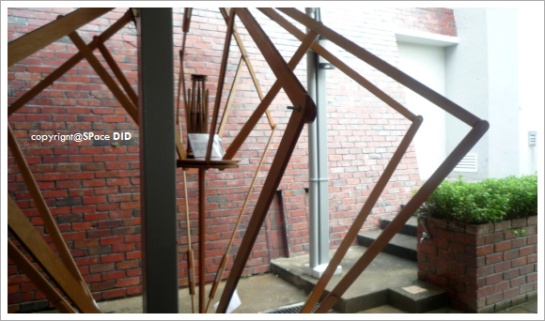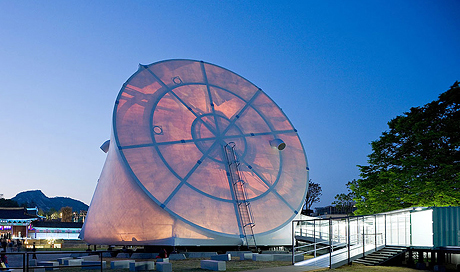
DID-3 System+Device
.…………………………………………………………………………………………………………………………………………………………..
Prada Transformer is a 6 month installation ( 2009 ) on the historical palace site at the center of Seoul, South Korea. The steel structure rolls over between exhibitions creating ideal spatial environment for each of four different events: art, film, fashion & the boarder culture of Prada.

- Prada Transformer

Prada Transformer
New-York based architect
Chuck Hoberman has developed transformable architecture in more than 15 years. He is also deeply into changing the shapes of responsive architecture. The toy version of his design, Hoberman Sphere, now became an icon, selling more than million across the world.
- Hoberman Sphere, 1995
Q: Can you provide a few examples of transformable design?
CH: Variable shading and ventilation, operable coverings, retractable walls and facades, space transformation in the sense that spaces can be automatically altered for different uses: all of these would be types of transformable design.

Hoberman "Iris Dome"
Q: How does transformability apply to sustainability?
CH: The convergence of computational systems and the need for sustainable solutions in my view is pointing a new direction for architecture of adaptive buildings. Systems that respond to the environment, such as shading and ventilation systems, or spaces that transform, like rapid deployment structures – these are all sustainable strategies. In regards to responsive systems, the changing nature of the environment implies that buildings that respond in real time confer direct benefits in regards to reduced energy consumptions and improved interior environments. While this concept is not new – one needs only to look at blinds, shades and louvers to see that this is an accepted strategy – it is still rudimentary from a design standpoint.

- Expanding Geodesic Dome
Q: And what about transformable spaces?
CH: Take a building that is used for a limited period of time. If the spaces in the building are adapted for more uses because they can be reconfigured, energy and resources get used in a more effective way. It speaks to the aspect of sustainable design that is not about ongoing energy use, but about embodied energy during construction. A building that physically can reconfigure itself using our systems can have a higher level of environmental performance.

